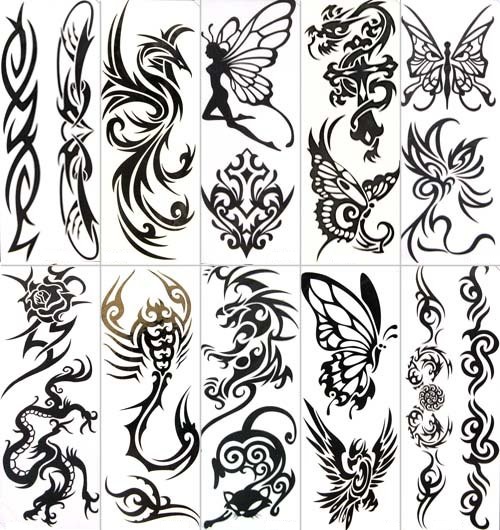Table Of Content

I’m Bobby Pham, but you can call me “Bobby on Cruise.” I’ve been cruising the high seas and exploring the world for years, and I’m thrilled to share my passion and expertise with you. When not cruising, I spend my time on growing my marketing agency. "The real objective is to go 18 or 19 knots much more efficiently, (and) the thing that makes it able to do that also makes it faster." Any decisions to speed up or slow down are always made with everyone’s safety and comfort in mind. Meanwhile, ships that sail to Antarctica or through Alaska’s Inside Passage may need to adjust their speed if there are glaciers or icebergs in the area. Overall, my goal is to provide valuable information and assistance to anyone planning a cruise vacation.
Why Do Ships Measure Speed in Knots?
To reach the island on time in the morning, the ship needs to sail slower than its normal cruising speed. It’s hard to imagine a massive vessel, complete with rooms, restaurants, entertainment centers and possibly hundreds, sometimes thousands of passengers, moving swiftly. But, if you’ve ever set sail before, you know large ships make it from port to port somehow without sprinting across the water. In this guide, we’ll answer some speed-related questions and explore factors that impact a ship’s cruising rate. When you convert 1 knot to miles per hour, it works out to 1.15 standard miles per hour for every nautical mile per hour.
How Fast Do Wooden Ships Go?
The speed of a cruise ship can impact the overall duration of your voyage and the amount of time you have to explore each destination. If you prefer a leisurely pace and want to spend more time in port, you may opt for a cruise on a ship that operates at slower speeds. Conversely, if you are looking to cover more ground or have limited time, a high-speed cruise ship may be more suitable for your needs.
What Speed Do Cruise Ships Go
It’s important to note that the cruise industry focuses more on providing a relaxing and enjoyable experience rather than emphasizing speed. The journey itself is a significant part of the vacation, allowing passengers to revel in the amenities and activities provided onboard. So, even if the speed may not be exceptionally high, the voyage offers ample opportunities for relaxation, entertainment, and exploration. To put that into perspective, one knot is about 1.15 regular miles per hour (the speed measurement we use on land). So, when you’re comparing speed in different contexts—on land, air, or sea—remember that the units of measurement aren’t the same. Learning about this is your first-class ticket to the nautical lingo club.
What is the environmental impact of cruise ship speeds?
Essentially, every improvement means cruise ships can go faster with the same fuel use or the same speed with less energy. Depending on the weather and other factors, a ship may take longer to travel 480 nautical miles. It’s hard to imagine anything as large and heavy as a cruise ship being able to move — much less glide effortlessly through the water. Cruise ships are modern marvels not just for their size and amenities, but also for their (surprisingly fast) travel speed. If you're traveling on a ship, you may be curious to know the answer to, "how fast do cruise ships go?" Our guide provides the answer.
Why Do We Use Knots Instead of Miles Per Hour?
Each flagship vessel represents its respective company’s commitment to innovation, sustainability, and exceptional guest experiences. So, whether you’re cruising during the day or at night, the average speed of a modern cruise ship remains consistent. Most cruise ships have the capability to maintain their cruising speed of around 20 knots, providing a steady and comfortable journey for all onboard. Today’s cruise ships are capable of far faster speeds, thanks to huge advancements in technology. As a result, an average large cruise ship travels at cruising speeds greater than the maximum speed of a historical wooden vessel. When planning your cruise vacation, it’s beneficial to research the typical speeds of the ships you are considering.
Fuel Conservation

Nor would you want to buzz through Norwegian fjords without getting to take in the scenery. A cruise is about enjoying the voyage and the natural beauty surrounding you just as much as the destination. It’s about slowing down, taking time to disconnect from work and reconnect with life. Cruising is part of the experience — not just a means to get where you’re going. ’, I’ll be sharing my findings on the cruising industry’s speed basics, the fastest ships, and the factors that can affect a ship’s velocity.
What Is the Speed of the Fastest Cruise Ship?

Larger ships generally have more powerful engines, enabling them to achieve higher speeds. Additionally, their streamlined designs reduce drag and resistance, allowing for smoother and more efficient travel through the water. The number of passengers onboard a cruise ship can also affect its speed.
Cunard World Voyage 2017: Queen Elizabeth itinerary
What is the Top Speed of a Cruise Ship Ever Recorded? - Cruise Hive
What is the Top Speed of a Cruise Ship Ever Recorded?.
Posted: Fri, 07 Jul 2023 07:00:00 GMT [source]
Additionally, rough seas or navigational hazards such as icebergs can also slow down a cruise ship. Captains may choose to reduce speed for safety reasons, ensuring a smooth and comfortable journey for passengers. One of the main factors that determine the speed of a cruise ship is the power of its engines. Cruise ships are powered by diesel reciprocating engines, which supply the necessary power to turn the propeller shafts that propel the ship through the water. The more horsepower the engines have, the more power they can generate, and the faster the ship can travel. However, it’s important to note that cruise ships don’t always travel at their maximum speed.
Faster ships can cover more distances in a shorter time, allowing them to visit more destinations within a set time frame. However, speed must be balanced with other factors, such as time spent in port, to create an attractive and feasible itinerary for passengers. For example, a faster ship could enable passengers to spend more time exploring the best Mayan ruins in Costa Maya, Mexico, providing an unforgettable experience. Keep in mind that this is the average speed, not the fastest speed the ship can travel.
Have you ever stood on the deck and wondered, “How fast do cruise ships go? This provides a much more welcoming and intimate atmosphere, where you can expect attentive staff and spacious suites. You’ll also enjoy access to unique, uncrowded ports that gigantic ships must skip due to their size. Of course, enormous cruise ships can’t run without substantial fuel supply. Larger cruise ships can use up to 250 tons of fuel per day and burn a gallon of fuel every 30 to 60 feet traveled — that’s over 80,000 gallons of gasoline a day. Assuming a cruise ship is optimally designed for weight load, its speed will be the square root of its horsepower divided by weight.
Cruise ships typically travel at speeds of 21 to 24 knots, which is equivalent to 38.9 to 44.4 km/h. In the 1950s, the time it would take to complete an ocean crossing was a major selling point for cruise lines. These days, however, people prefer to cruise at a more leisurely pace and call at several destinations during the voyage. In cases of emergency a cruise ship may travel at top speeds as well. For instance, if a distress call comes in and the ship needs to assist another vessel a captain will use the ship’s full resources to lend aid as quickly as possible.
Cruise lines strive to find the perfect balance between speed, efficiency, and passenger satisfaction to create a memorable and enjoyable cruising experience. It’s important to remember that these speeds are exceptional and not the norm for most cruise ships. In fact, the average cruising speed of a typical cruise ship is around 19 to 23 knots (23 to 26 mph). This range allows for optimal fuel efficiency and passenger comfort, ensuring a smooth and enjoyable voyage.
Additionally, distance to shore and potential hazards along the route can also impact the ship’s speed and itinerary. Overall, it’s important to consider all of these factors when planning a cruise to ensure a safe and enjoyable journey. Weather conditions play a big role in determining how fast a cruise ship can go. High winds, waves, and storms can slow down the ship significantly, while calm seas and clear skies can allow for a smooth and speedy journey. Cruise ship average speed is affected by lots of outside forces, as mentioned above. In relatively calm conditions, the average present-day vessel travels about 20 knots or 23 mph between ports of call.
By using the Azipods and bow thrusters together, cruise ship captains can easily navigate ports and other tight areas that cruise ships travel. Ocean liners tend to have greater traveling speed because they’re built with transportation in mind. Besides being designed for maximum speed, ocean liners also have a few other key differences. Cruise ships time their journeys to dock at ports in the early morning and depart in the evening to allow passengers to explore.

No comments:
Post a Comment